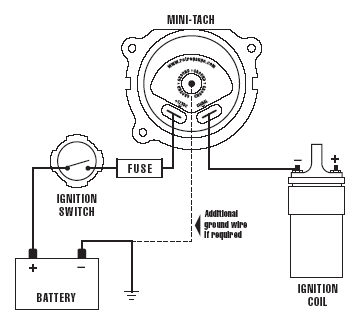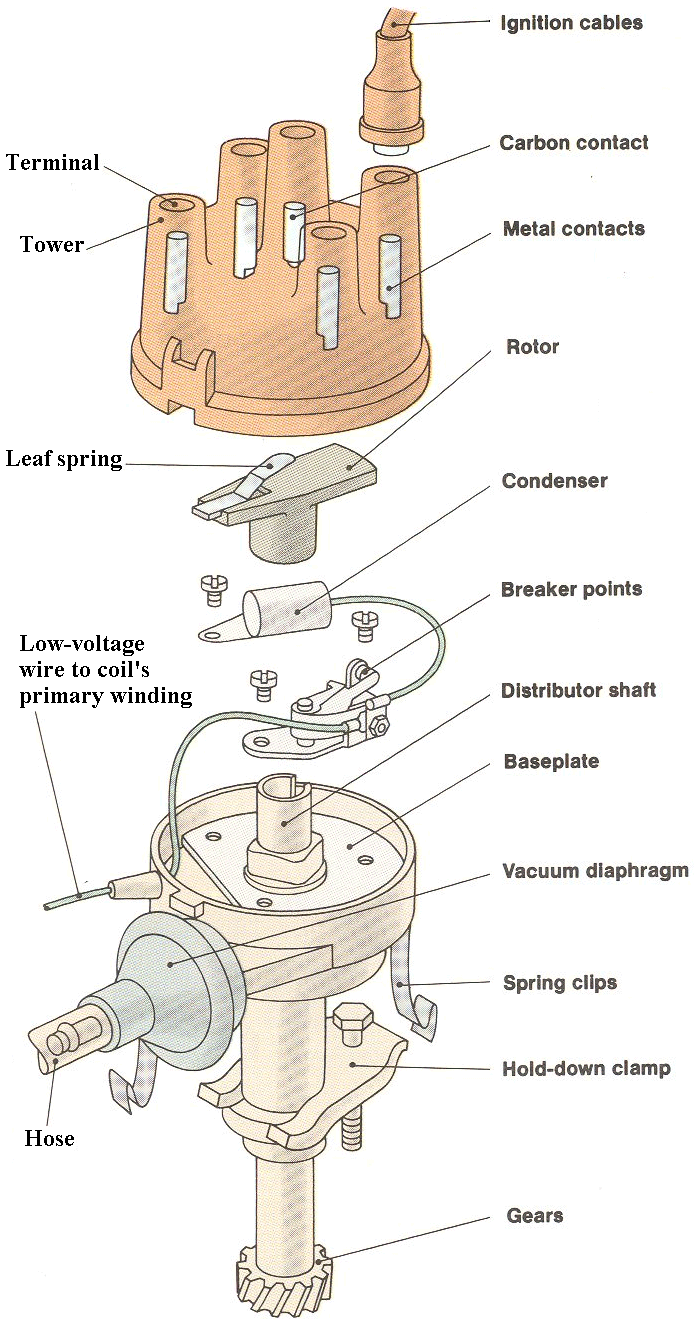
- •Internal combustion engine
- •The four-stroke cycle
- •Complete the sentences with the active form of the verb in brackets:
- •The carburetor
- •1. Translate the following text into Ukrainian in written form
- •2. Complete the sentences with the active form of the verb in brackets:
- •The crankshaft
- •The battery and coil
- •The contact breaker and the distributor
- •1. Complete the sentences with the active form of the verb in brackets:
- •The cooling system
- •The lubricating (oiling) system
- •1. Complete the sentences with the active form of the verb in brackets:
- •The transmission system
- •Neutral gear
- •The clutch
- •Rear axle gears
- •1. Translate the text in written form
- •2. Complete the sentences with the active form of the verb in brackets:
- •The brakes
- •Some differences
- •Complete the sentences with the active form of the verb in brackets:
- •Text 16
- •Put the missing prepositions into the questions. Ask them your partner:
- •Match the headings with their extracts.
- •The changing expectations of automotive engineers
- •Here are the answers to some questions. What are the questions?
- •Put each of the following words or phrases in correct sentence below.
- •Find the words hidden in the jumbles. Translate the sentences.
- •6. Complete the sentences with the passive form of the verb in brackets:
- •Complete the table with these phrases used to talk about the future. Can you add any more?
- •The car of the future
- •Are these sentences about the text true (t) or false (f)?
- •Find words and expressions in the text which match these definitions:
- •Find the words hidden in the jumbles:
- •Put the verb into the correct tense form in Passive.
- •Alternative vehicles
- •6. Answer these questions:
- •Make sure that you know these terms:
- •Match words from the two boxes to make expressions.
- •Now use the expressions above to complete the sentences and translate them into Ukrainian:
- •Match the words and phrases to the correct headings.
- •A car safety programme
- •Try to answer these questions asked by people in the audience.
- •Put the safety features into the correct column. Which of these safety features does your or your parents’ car have?
- •Use the words in the box to complete the flow chart.
- •Complete the text about car recalls with words from the box below. Translate the sentences.
- •Match the questions (1 – 7) with their answers (a – g):
- •Find someone in your class who:
- •Airbags
- •Answer the following questions:
- •Make sure that you know these terms:
- •Fill the missing words in. The first one has been done for you. Use them in the sentences of your own.
- •Complete the adjectives with –ed or –ing. Make some sentences of your own using them.
- •Read and translate this extract in written form:
- •Rewrite the sentences with a participle clause instead of a relative one.
- •Do you agree or disagree with the following statements?
- •Sensors and the automobile
- •Complete the sentences with the information from the text:
- •Which instrument shows you:
- •Match each abbreviation with its meaning:
- •Translate the following extract in written form: a cockpit for business class
- •Complete the sentences with a verb from the box in its participle form.
- •What are your predictions for the next ten years for instruments and switches of the car? Prepare a short report or presentation.
The battery and coil

The battery is used to store electricity. The electrical pressure (voltage) of a car battery is only 12 volts. When high voltage electricity jumps a space between two points it causes a spark. This happens in the sparking plug. A voltage of about 7,000 volts will cause a good spark. How do we get 7,000 volts from a 12-volt battery?
The coil does it. The coil is really two coils of wire: the primary coil and the secondary coil. The electricity (12 volts) from the battery flows through the primary coil. Suddenly stopping the flow to the primary coil causes a very strong flow in the secondary coil. The flow through the primary coil is stopped by the contact breaker.

The contact breaker and the distributor
The contact breaker stops or breaks the flow of electricity in the primary coil. The distributor distributes the high voltage electricity to the sparking plugs.
The electricity from the primary coil flows through the centre of the distributor. This rod is turned by the camshaft. There are points in the contact breaker. The points can be opened so as to break the flow of electricity to the primary coil. The points are opened by a cam. They are closed by a spring.
The cam of a four-cylinder engine fits on the rod from the camshaft. It turns when the rod turns. Each corner of the cam presses on the contact breaker. This opens the points of the contact breaker. (A condenser stops any spark at these points) Now high-voltage electricity flows through the secondary coil to the distributor rotor arm.
The rotor arm is above the contact breaker cam. It is turned by the same rod from the camshaft. As the rotor arm goes round it touches points. Each of these leads to a sparking plug. Each time the arm touches a point the contact breaker points are also open. Then high-voltage electricity flows from the secondary coil to the rotor arm. From the rotor arm it goes to the sparking plug. This causes a spark.
Let us look at this again. The cam opens the points. The flow of electricity to the primary coil stops. High-voltage electricity flows in the secondary coil. It flows through the rotor arm to the sparking plugs. The cam turns. The points close. Electricity flows again into the primary coil. The rotor arm turns also. Contact with the sparking plug is broken. All this is controlled from the camshaft.
1. Complete the sentences with the active form of the verb in brackets:
It ……… (to get) dark. Shall I turn on the light?
You ……… (to make) a lot of noise. Could you be quieter? I ……… (to try) to concentrate.
The library ……… (to open) at 9 o’clock and ……… (to close) at 6 every day but weekends.
Bad driving ……… (to cause) many accidents.
The economic situation is very bad and it ……… (to get) worse.
Julia is very good at languages. She ……… (to speak) four languages fluently.
Don’t put the dictionary away. I ……… (to use) it.
Don’t put the dictionary away. I ……… (to need) it.
It was hard work carrying the bags. They ……… (to be) very heavy. I could hardly put them into the boot of my car.
When I was young, I ……… (to want) to be a bus driver.
Text 12
